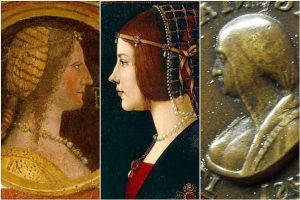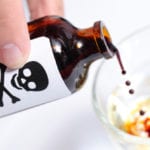 Technology
Technology  Technology
Technology  Humans
Humans 10 Everyday Human Behaviors That Are Actually Survival Instincts
 Animals
Animals 10 Animals That Humiliated and Harmed Historical Leaders
 History
History 10 Most Influential Protests in Modern History
 Creepy
Creepy 10 More Representations of Death from Myth, Legend, and Folktale
 Technology
Technology 10 Scientific Breakthroughs of 2025 That’ll Change Everything
 Our World
Our World 10 Ways Icelandic Culture Makes Other Countries Look Boring
 Misconceptions
Misconceptions 10 Common Misconceptions About the Victorian Era
 Mysteries
Mysteries 10 Strange Unexplained Mysteries of 2025
 Miscellaneous
Miscellaneous 10 of History’s Most Bell-Ringing Finishing Moves
 Technology
Technology Top 10 Everyday Tech Buzzwords That Hide a Darker Past
 Humans
Humans 10 Everyday Human Behaviors That Are Actually Survival Instincts
 Animals
Animals 10 Animals That Humiliated and Harmed Historical Leaders
Who's Behind Listverse?

Jamie Frater
Head Editor
Jamie founded Listverse due to an insatiable desire to share fascinating, obscure, and bizarre facts. He has been a guest speaker on numerous national radio and television stations and is a five time published author.
More About Us History
History 10 Most Influential Protests in Modern History
 Creepy
Creepy 10 More Representations of Death from Myth, Legend, and Folktale
 Technology
Technology 10 Scientific Breakthroughs of 2025 That’ll Change Everything
 Our World
Our World 10 Ways Icelandic Culture Makes Other Countries Look Boring
 Misconceptions
Misconceptions 10 Common Misconceptions About the Victorian Era
 Mysteries
Mysteries 10 Strange Unexplained Mysteries of 2025
 Miscellaneous
Miscellaneous 10 of History’s Most Bell-Ringing Finishing Moves
10 Sick Royals and Nobles Who Were Actually Being Poisoned
Many a “whodunnit” has ended with a murderer killing a king or queen with poison. However, royal poisoners are out there in real life, too, and some of them nearly got away with their crimes. Here are ten times poisoners fooled the public into thinking that their Highness was just suffering from a benign case of the flu.
Related: 10 Poisonings With Extraordinarily Common Household Items
10 Queen Elizabeth I
Queen Elizabeth I is probably one of the most famous royals to have fallen prey to sickness and poison. And unfortunately for her, it was her own fault.
You see, in 1562, the queen was plagued with a case of smallpox. While she recovered from the illness, it left her with a number of scars on her face. As with many women, the queen turned to makeup as a solution for her beauty problems.
The trouble is that the makeup that the queen used to cover her face was a white powder called Venetian ceruse. Although there’s nothing wrong with powdering your nose from time to time, this particular powder contains lead, a chemical that’s poisonous to the human body.
To make matters worse, the queen paired her poisonous foundation with a red lipstick made from mercury! As with lead, mercury is a highly toxic substance that can lead to all kinds of physical ailments.
It’s no surprise then that over time, the queen’s health began to decline. She became irritable and experienced deep skin lesions on her face, depression, and memory loss. Although historians can’t say for sure what finally killed her, one suspected cause is cancer, caused by lead poisoning, and depression, caused by mercury.[1]
9 Diane de Poitiers
Diane de Poitiers isn’t quite a royal, but she certainly moved in the royal courts. Diane de Poitiers was the mistress of King Henri II, and considering she was 20 years older than him, she seemed to have had a few insecurities about her age.
To combat her aging woes, Diane came up with a solution—drinkable gold. Drinkable gold was a popular anti-aging serum in France at the time and was made by liquefying gold chloride and diethyl ether. Then, women and men alike would drink the serum in order to stay young and healthy forever.
As with so many options, however, the serum didn’t work. In fact, it made her quite ill. It’s thought to have eventually led to her death, as gold intoxication is fatal. Additionally, mercury was used in the elixir, which also may have contributed to the poor mistress’s hapless death.[2]
8 Isabella Princess of Naples

Isabella of Aragon was the Princess of Naples from the late 1400s until the early 1500s. Although she lived to be over 50 years old, she might have been able to live a lot longer if it weren’t for the fact that she fell ill.
Isabella was chronically sick, constantly suffering from nasty fevers and general, unidentifiable illnesses. In fact, she was so generally ill that she eventually died from a swelling of the body. At the time, many people thought she was just sick; however, it seems that there was something more sinister going on—poison.
Back in the day, mercury was a common remedy for all types of health concerns, whether it was a simple itch or something more serious. With Isabella constantly taking mercury to cure her ailing health, she eventually wound up poisoning herself. The more mercury she took, the worse she felt, eventually leading to her death.[3]
7 Alexander III of Macedon
Alexander III of Macedon, more commonly known as Alexander the Great, died in June 323 BC. Despite the fact that he died so many years ago, his death has been quite controversial.
There are historians who believe he had an autoimmune disorder that caused his death. Others believe he may have died of alcohol poisoning. Still, others attribute his death to a nasty case of typhoid fever or malaria.
One strong theory, however, is that Alexander the Great died of Veratrum poisoning. Veratrum poisoning leads to muscle weakness, nausea, vomiting, and stomach pain, all of which Alexander the Great experienced for 12 excruciating days up to his death.
The jury is still out on whether Alexander died of an actual disease or if he was really the victim of poisoning. And, considering he died so many years ago, it’s likely that we’ll never know for sure.[4]
6 Emperor Zhongzong of Tang

They say you should always watch your back, and for royals, that couldn’t be more true. Unfortunately for Emperor Zhongzong of Tang, it seems no one ever gave him this piece of advice.
Emperor Zhongzong ruled China during the Tang dynasty, although he was never exactly a great ruler. In fact, he often left the real power over his empire in the hands of his consort, Empress Wei.
Sadly, it seemed that Empress Wei wasn’t satisfied being just a consort and wanted full power as a regent. One night at dinner, she slipped him a poisoned cake, which Emperor Zhongzong happily ate. Shortly after, the emperor fell quite ill and was suddenly found dead not long after.
Although courtiers claimed that the emperor’s death was due to sudden illness, historians have speculated that there may have been foul play involved. It’s up to you to decide whether you believe Empress Wei was innocent or not.[5]
5 Henry VII of Luxembourg
We often hear about the King Henrys of England, but it’s not so often that we hear about King Henry of Luxembourg. Still, when it comes to poison disguised as sickness, Henry VII of Luxembourg, Holy Roman Emperor, is worth mentioning.
During the early 1300s, a nasty bout of anthrax went around the king’s court, killing his horses and leaving numerous courtiers sick or worse. King Henry himself succumbed to the awful disease and developed nasty black sores all over his body.
Although the sores didn’t kill him, they certainly left him in a lot of pain. In order to cure the sores, his physicians prescribed arsenic to combat them. Much to the king’s delight, the medicine worked!
What he didn’t know is that while the arsenic was killing the harmful anthrax bacteria, it was also killing the king. Slowly but surely, the king began to succumb to arsenic poisoning, getting sicker and sicker as his life continued. Eventually, the king died, and when historians recovered his body, they found his bones loaded with the harmful chemical.[6]
4 Napoleon Bonaparte
Whereas some kings were killed due to foul play, others were just unfortunate. The small yet mighty leader Napoleon Bonaparte may be one person who fell into the latter category.
Although Napoleon is largely known as a fearless leader and strong military man, toward the end of his life, he grew weak and sickly. He began to struggle with serious stomach pain and digestive issues and finally died of stomach cancer.
Now, while there are many people who simply get sick and die of cancer, in Napoleon’s case, it seems the true cause of death wasn’t quite so simple. You see, Napoleon’s favorite color was green, and he had his walls painted in a beautiful, bright green tone known as Scheele’s Green.
Unfortunately for him, Scheele’s green was made using arsenic, which, as you might have guessed, can cause stomach cancer, among other ailments. After looking closely at his autopsy, it seems that arsenic may have been related to the cause of death and that it was unintentional poisoning that killed the young leader, after all.[7]
3 Qin Shi Huang
Qin Shi Huang was the first Emperor of China, and right from the get-go, he was obsessed with living forever. As with many Daoists and Feng-Shui-following Chinesemen, the Emperor turned to alchemy.
There were several Chinese alchemists in his time who were whipping up so-called elixirs of life, said to bring the drinker eternal youth. And, with much glee, Qin Shi Huang began drinking these elixirs himself. Unfortunately for him, the main ingredient in these elixirs was mercury.
One day, in particular, the emperor took several pills from an alchemist that promised eternal life. The pills contained a lethal dose of mercury, and the ruler fell seriously ill. By the next morning, the emperor was dead. The irony is that in his search for eternal life, Qin Shi Huang wound up leading himself only closer to his death.[8]
2 Charles VI, Holy Roman Emperor

Charles VI was the Holy Roman Emperor starting in 1711 and laid claim to the throne of Austria as well. Like so many unwitting kings, Charles VI went down thanks to poison.
As the story goes, Charles VI was served a plate of mushrooms stewed in oil at dinner, which was allegedly one of his favorite dishes. Imagine his dismay, then, when after eating his hearty meal, the king fell quite ill.
The poor king suffered from an unknown illness for ten days, with his doctors trying to treat his mysterious illness. It didn’t matter what the doctors did, however, and the king eventually succumbed to his illness.
Although it was likely an accident, years later, historians discovered that the mushrooms the king actually ate were death cap mushrooms. Easily mistaken for common edible mushrooms, these fungi are highly toxic and lead to liver failure. And so, it seems poor Charles VI died of toxic mushrooms rather than a nasty case of the stomach flu.[9]
1 Cangrande della Scala

Cangrande della Scala is a little-known nobleman from Italy. The cardinal was entering Verona after a long-awaited defeat of the nobles in the city of Treviso when he became quite ill.
Just four days after his big entrance into the city, the cardinal was dead. At the time, the doctors said that Cangrande della Scala had died after becoming sick from drinking from a contaminated well.
However, years later, after exhuming his body, historians believe a different cause of death was at play. It seems that the cardinal actually died from digitalis poisoning, a nasty poison that is primarily made from foxglove. Although the cardinal could have consumed the substance accidentally, it’s far more probable that someone slipped it into his drink at one point, leaving him dead due to poisoning.[10]








